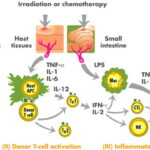Haemophilus influenzae type b (Hib) is a significant cause of bacterial meningitis, pneumonia, epiglottitis, and septicemia in young children. Although largely preventable through vaccination, gaps in coverage, surveillance, and awareness persist globally. This article provides an in-depth overview of evidence-based measures to prevent Hib disease, with emphasis on immunization programs, public health infrastructure, and clinical strategies.

Understanding Haemophilus influenzae Type b and Its Epidemiology
Hib is a Gram-negative, encapsulated bacterium that predominantly affects children under five years of age. Its virulence is primarily due to the polyribosylribitol phosphate (PRP) capsule, enabling it to evade host immunity and invade the bloodstream.
Global Burden
Prior to the introduction of the Hib conjugate vaccine, Hib was responsible for:
- 400,000 to 700,000 deaths annually worldwide
- Majority of cases in children aged 2–24 months
- Higher incidence in regions without national immunization programs
Hib Vaccine: The Cornerstone of Prevention
Types of Hib Vaccines
The development of Hib conjugate vaccines revolutionized disease control by enhancing immunogenicity in infants.
- Monovalent Hib vaccine: Contains only the Hib antigen
- Combination vaccines: Hib combined with DTP, hepatitis B, or polio antigens
All formulations are based on the PRP polysaccharide conjugated to protein carriers such as tetanus or diphtheria toxoid.
Recommended Immunization Schedule
The World Health Organization recommends:
- Primary series at 6, 10, and 14 weeks of age
- Booster dose at 12–18 months (depending on country-specific guidelines)
National schedules may vary based on disease burden and vaccine availability.
High Coverage Rates: Critical for Herd Immunity
Achieving ≥90% vaccine coverage is essential to prevent circulation and reduce invasive disease. High coverage:
- Provides direct protection to vaccinated individuals
- Confers indirect protection via reduced nasopharyngeal carriage
- Interrupts transmission chains, especially in household and daycare settings
Challenges to Hib Prevention in Low-Resource Settings
Barriers to Implementation
- Inadequate cold chain infrastructure
- Limited healthcare access in remote regions
- Low awareness and vaccine hesitancy
- Competing healthcare priorities and limited budgets
Strategies for Overcoming Obstacles
- Integration of Hib into routine immunization programs
- Deployment of combination vaccines to increase compliance
- Training health workers for effective community outreach
- Engaging local leaders and caregivers in education efforts
Surveillance Systems and Data-Driven Policy
Reliable disease surveillance is fundamental for guiding immunization strategies.
Components of Effective Surveillance
- Case-based reporting of invasive Hib disease (e.g., meningitis, pneumonia)
- Laboratory confirmation via culture or PCR
- Monitoring of vaccine impact on disease incidence
Surveillance data enables policymakers to:
- Evaluate vaccine effectiveness
- Detect potential serotype replacement
- Adjust immunization policies accordingly
Importance of Booster Doses in Sustained Immunity
Primary vaccination induces an early immune response, but booster doses are vital to maintain protective antibody levels beyond infancy. Booster administration:
- Reinforces long-term immunity
- Prevents waning antibody titers
- Reduces risk of breakthrough infections in toddlers and preschoolers
Special Considerations for High-Risk Populations
Certain groups are more susceptible to invasive Hib disease and require tailored interventions:
- Immunocompromised children (e.g., HIV-positive, post-splenectomy)
- Indigenous populations with historically higher incidence
- Refugees and migrants with incomplete immunization records
Strategies include:
- Early initiation of vaccination
- Additional booster doses
- Active case-finding and catch-up immunization
Non-Vaccine Preventive Measures
Although vaccination is the primary defense, additional strategies support Hib prevention:
Chemoprophylaxis
Administered to household or daycare contacts in outbreak settings:
- Rifampicin for 4 days is the standard regimen
- Used to eliminate nasopharyngeal carriage in close contacts
Infection Control in Healthcare Facilities
- Strict hand hygiene and respiratory precautions
- Isolation protocols for suspected or confirmed cases
Frequently Asked Questions
What is the most effective way to prevent Hib?
Vaccination with a Hib conjugate vaccine is the most effective method, ideally administered in early infancy as per national immunization schedules.
Can Hib still occur in vaccinated individuals?
Breakthrough cases are rare but possible if vaccination is incomplete or if immunity has waned. Booster doses help prevent such occurrences.
Is the Hib vaccine safe?
Yes. Hib conjugate vaccines have an excellent safety profile, with only minor side effects like low-grade fever or injection site redness.
Who should receive chemoprophylaxis for Hib?
Close contacts of an index case (especially unvaccinated children) in households or daycare centers should receive rifampicin prophylaxis.
Why is Hib less common in developed countries?
Widespread vaccination, high coverage rates, robust surveillance, and public health infrastructure contribute to the low incidence in high-income countries.
The prevention of Haemophilus influenzae type b is a public health success story in regions with strong immunization programs. However, vigilance remains essential in maintaining high vaccine coverage, closing immunity gaps, and extending protection to all populations. Through integrated strategies combining vaccination, surveillance, and targeted interventions, we can sustain progress toward the global elimination of invasive Hib disease.

